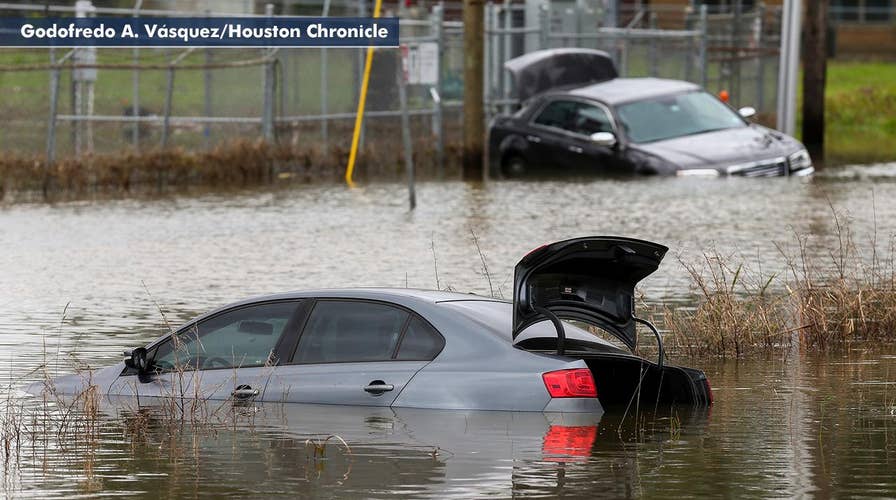Severe storms bring torrential rain, hail and flooding to Houston
Emergency management officials warn residents to stay off rain-soaked roads.
When thunderstorms strike during warmer times of the year, some of those storms may be powerful enough to warrant a "severe thunderstorm warning."
The National Oceanic and Atmospheric Administration's National Severe Storms Laboratory defines a severe thunderstorm as a storm that contains one or more of the following: hail 1 inch or greater, winds gusting in excess of 57.5 mph, or a tornado.
In general, thunderstorms produce lightning and tornadoes in addition to heavy rain that can cause flash flooding.
LIGHTNING SAFETY: WHAT YOU NEED TO KNOW
So, what's the difference between a severe thunderstorm watch and a warning?
According to the National Weather Service, a watch is issued when conditions exist for severe thunderstorms.
"Stay informed and be ready to act if a severe thunderstorm warning is issued," according to the Weather Service. "The watch area is typically large, covering numerous counties or even states."

The difference between a severe thunderstorm warning and severe thunderstorm watch. (National Weather Service)
Forecasters urged people to "be prepared" for changing conditions in a watch area.
WHAT IS A MICROBURST? WHAT TO KNOW ABOUT THIS TYPE OF DAMAGING WIND
When trained weather spotters or radar indicate that severe thunderstorm conditions may exist, forecasters then issue a "severe thunderstorm warning."
"Warnings indicate imminent danger to life and property," according to the NWS. "Take shelter in a substantial building."
While watches may cover wide areas, warnings focus on a smaller area that includes cities or small counties threatened by large hail or damaging winds.
CLICK HERE FOR MORE WEATHER COVERAGE FROM FOX NEWS
According to the NSSL, thunderstorms are most likely in the spring and summer months, particularly during the afternoon and evening hours, but they can occur year-round and at all hours.
"Along the Gulf Coast and across the southeastern and western states, most thunderstorms occur during the afternoon," the agency states. "Thunderstorms frequently occur in the late afternoon and at night in the Plains states."






















